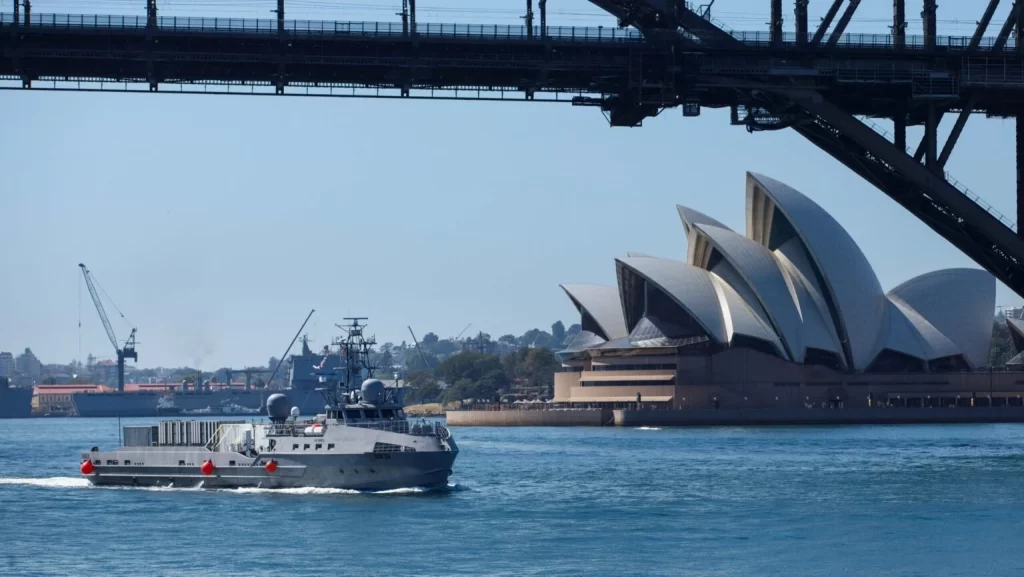- The four USVs featured in the exercise collectively transited 46,000 nautical miles over several months
The US Navy said its recently completed months-long exercise featuring four unmanned surface vehicles provided both sailors and engineers an opportunity to test out at a tactical level how such drones can be “seamlessly” integrated with the future fleet.
“We were working through both the process of how you would conduct those longer transits for longer periods of time in benign waters or uncontested waters” as well as what the “tactical” employment of those vessels might look like, Cmdr. Jeremiah Daley told reporters today of the service’s Integrated Battle Program 23.2.
That exercise, which began in August and concluded Sunday, featured four of the US Navy’s premiere USVs — Leidos-made Mariner, Ranger, Seahawk and Sea Hunter — as well as visits and exercises with the Japanese and Australian militaries. Daley is the commanding officer of Unmanned Surface Vessel Division One, the operational unit controlling the four vessels. Also called USDIV-1, the command was stood up in 2022 with the specific task of testing and evaluating future unmanned surface vessels and their potential integration into the wider fleet.
Throughout the course of the exercise, the four USVs, collectively transited more than 46,000 nautical miles autonomously. Daley said the vessels were continuously at sea for “normal periods of time” that traditional warships would be — between 25 and 50 days at a time — and were controlled by either facilities ashore or by engineers underway on nearby destroyers.

As vessels that largely started out as experimental assets, the four unmanned ships used in IBP have collectively been informing the Navy’s future programs of record for medium and large unmanned surface vehicles through their various transits. Daley said that although the Navy’s future MUSV and LUSV may not have the same form factor as Seahawk, Sea Hunter, Mariner or Ranger, the transits in the western Pacific did inform “some of the things that we would need to have in an expeditionary environment to maintain these vessels.”
“We worked through that very diligently and had some real world applications of how we would do that, during IBP 23.2,” he said.
While transiting through the Indo-Pacific, the vessels took part both in the Royal Australian Navy’s Exercise Autonomous War in November and the US Navy’s Large Scale Exercise 2023 in August.
“Through analysis, simulation, prototyping, and demonstration, exercises like IBP 23.2 advance manned-unmanned teaming to support traditional capabilities in the Indo-Pacific,” said Vice Adm. Michael Boyle, commander of US 3rd Fleet. “As we continue employing these capabilities, our Sailors will gain confidence and skill operating alongside unmanned platforms that more seamlessly integrate across the force to enhance decision speed and lethality.”
@BreakingDefense, https://breakingdefense.com/2024/01/navy-tests-tactical-employment-of-unmanned-ships-in-months-long-exercise/

